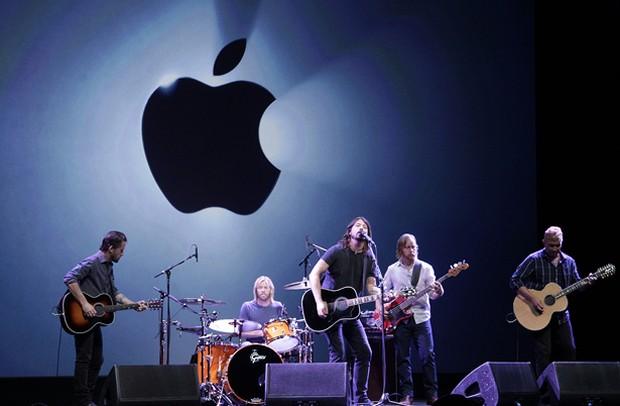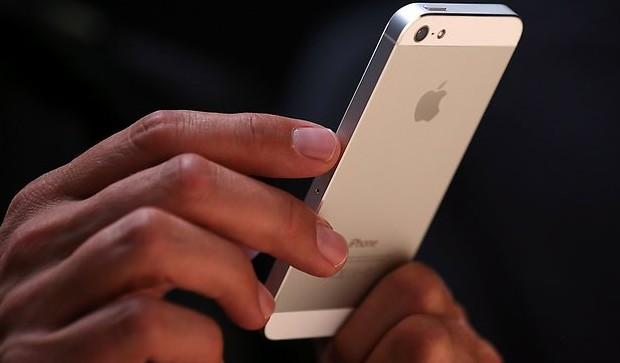Hoards of tech-savvy Apple-hungry consumers lined sidewalks last week, and stood with itchy fingers in queues that stretched around corners and through shopping complexes, for the Foo Fighters fuelled launch of the iPhone 5 – well those in the seven lucky countries that got the new iPhones first.

The excited hum of the Technorati was palpable as they eagerly bubbled over the new list of features, functionality and improvements: A lightweight and 18 percent thinner aluminum body; a pixel density so high (326 per inch) that the human eye is incapable of identifying individual pixels; and faster wireless, CPU performance and graphics. Oh yeah, and a bigger screen.

What the iPhone 5 could mean for Mobile Business Intelligence
The increased screen size didn’t receive as much attention as some of the other developments; but those considering the iPhone 5 for business purposes should take note, especially those looking to implement Mobile Business Intelligence (BI).
While the new screen size might pose some minor initial headaches for developers, is it possible that the expanded screen size will spur greater mobile analytics adoption? And what effect will it have on the current and future Mobile BI landscape?
Mobile BI: “Where you come from, where you going?”
We know that Mobile BI has already gained substantial ground during 2012. Gartner’s 2012 BI Magic Quadrant survey suggested that by the end of 2012, a majority (53%) of organizations would have some form of mobile reporting and analytics solution in place.

More broadly, IBM provided some perspective on the trend towards enterprise mobility via The 2011 IBM Tech Trends Report, predicting that 85 percent of workers would receive critical business information via enterprise mobile applications by midway through 2013.
And, with all the hype surrounding Apple’s iPad – and other tablet devices and their potential business uses – many assumed, understandably, that tablets were driving Mobile BI adoption. After all, iPad sales alone have been nothing short of phenomenal; with Apple reporting that an astronomical 84 million iPads had been sold worldwide as of last week (September 21, 2012).
However, it’s worth remembering that Apple has also sold around 90 million iPhones in the USA alone. The total number of worldwide iPhone sales is nudging 200 million. And, to contextualize those figures further, Apple devours over 50 percent of the total profit generated by worldwide cellphone sales, according to The Economist.
Interestingly, this sustained popularity for the smaller-screened iPhone, as compared to the iPad, appears to be reflected in the flourishing Mobile BI community.
Dresner Advisory Services’ latest Mobile Business Intelligence Market Study demonstrated that a smartphone – the iPhone – remained the preferred platform for Mobile BI. Thirty-two percent of respondents to the October 2011 survey cited the Apple smartphone as their first choice platform for Mobile BI. The iPad was a close second, with 30 percent listing the Apple tablet as their preferred platform.

However, what’s more intriguing still, is that 66 percent of respondents listed a smartphone as their first choice delivery platform for Mobile BI (32% of survey participants listed the iPhone as their number one platform priority for Mobile BI, 16% listed the BlackBerry (RIM) smartphone, 13% the Google Android smartphone, and 5% the Windows 7 smartphone).
TechTarget’s 2012 Global IT Priorities Survey supports DAS’ findings. The survey discovered that 34 percent of respondents plan to introduce tablets as part of their corporate IT strategies in 2012, up from 18 percent in last year’s study. But, despite the substantial increase in planned tablet-based implementations, 35 percent of respondents still planned to implement smartphone-based initiatives in the next 12 months.
Whoopty do, but what does it all mean, Basil?
So, do these figures suggest that whilst the larger screen size of a tablet device is appealing, the convenience of a smartphone remains an inescapable factor? And further, has the supposed break-out popularity of the iPad - and its accompanying swag of larger screen companions - been overstated?

And, if true, is it therefore feasible, given Apple’s unquestionable dominance within current and planned Mobile BI implementations, that the iPhone 5’s new 4-inch screen might bridge the convenience – form factor gap?
Perhaps Apple’s latest smartphone creation will provide the immutable spark needed to drive Mobile BI adoption throughout the remainder of 2012, to unprecedented heights in 2013, and re-confirm the smartphone as the dominant platform for mobile reporting and analytics whilst simultaneously discarding the fleetingly mighty tablet to the fledgling Mobile BI scrapheap?
Are we witnessing the concurrent rebirth of the iPhone and death of the iPad for Mobile BI?

The excited hum of the Technorati was palpable as they eagerly bubbled over the new list of features, functionality and improvements: A lightweight and 18 percent thinner aluminum body; a pixel density so high (326 per inch) that the human eye is incapable of identifying individual pixels; and faster wireless, CPU performance and graphics. Oh yeah, and a bigger screen.

What the iPhone 5 could mean for Mobile Business Intelligence
The increased screen size didn’t receive as much attention as some of the other developments; but those considering the iPhone 5 for business purposes should take note, especially those looking to implement Mobile Business Intelligence (BI).
While the new screen size might pose some minor initial headaches for developers, is it possible that the expanded screen size will spur greater mobile analytics adoption? And what effect will it have on the current and future Mobile BI landscape?
Mobile BI: “Where you come from, where you going?”
We know that Mobile BI has already gained substantial ground during 2012. Gartner’s 2012 BI Magic Quadrant survey suggested that by the end of 2012, a majority (53%) of organizations would have some form of mobile reporting and analytics solution in place.

More broadly, IBM provided some perspective on the trend towards enterprise mobility via The 2011 IBM Tech Trends Report, predicting that 85 percent of workers would receive critical business information via enterprise mobile applications by midway through 2013.
And, with all the hype surrounding Apple’s iPad – and other tablet devices and their potential business uses – many assumed, understandably, that tablets were driving Mobile BI adoption. After all, iPad sales alone have been nothing short of phenomenal; with Apple reporting that an astronomical 84 million iPads had been sold worldwide as of last week (September 21, 2012).
However, it’s worth remembering that Apple has also sold around 90 million iPhones in the USA alone. The total number of worldwide iPhone sales is nudging 200 million. And, to contextualize those figures further, Apple devours over 50 percent of the total profit generated by worldwide cellphone sales, according to The Economist.
Interestingly, this sustained popularity for the smaller-screened iPhone, as compared to the iPad, appears to be reflected in the flourishing Mobile BI community.
Dresner Advisory Services’ latest Mobile Business Intelligence Market Study demonstrated that a smartphone – the iPhone – remained the preferred platform for Mobile BI. Thirty-two percent of respondents to the October 2011 survey cited the Apple smartphone as their first choice platform for Mobile BI. The iPad was a close second, with 30 percent listing the Apple tablet as their preferred platform.
However, what’s more intriguing still, is that 66 percent of respondents listed a smartphone as their first choice delivery platform for Mobile BI (32% of survey participants listed the iPhone as their number one platform priority for Mobile BI, 16% listed the BlackBerry (RIM) smartphone, 13% the Google Android smartphone, and 5% the Windows 7 smartphone).
TechTarget’s 2012 Global IT Priorities Survey supports DAS’ findings. The survey discovered that 34 percent of respondents plan to introduce tablets as part of their corporate IT strategies in 2012, up from 18 percent in last year’s study. But, despite the substantial increase in planned tablet-based implementations, 35 percent of respondents still planned to implement smartphone-based initiatives in the next 12 months.
Whoopty do, but what does it all mean, Basil?
So, do these figures suggest that whilst the larger screen size of a tablet device is appealing, the convenience of a smartphone remains an inescapable factor? And further, has the supposed break-out popularity of the iPad - and its accompanying swag of larger screen companions - been overstated?

And, if true, is it therefore feasible, given Apple’s unquestionable dominance within current and planned Mobile BI implementations, that the iPhone 5’s new 4-inch screen might bridge the convenience – form factor gap?
Perhaps Apple’s latest smartphone creation will provide the immutable spark needed to drive Mobile BI adoption throughout the remainder of 2012, to unprecedented heights in 2013, and re-confirm the smartphone as the dominant platform for mobile reporting and analytics whilst simultaneously discarding the fleetingly mighty tablet to the fledgling Mobile BI scrapheap?
Are we witnessing the concurrent rebirth of the iPhone and death of the iPad for Mobile BI?
